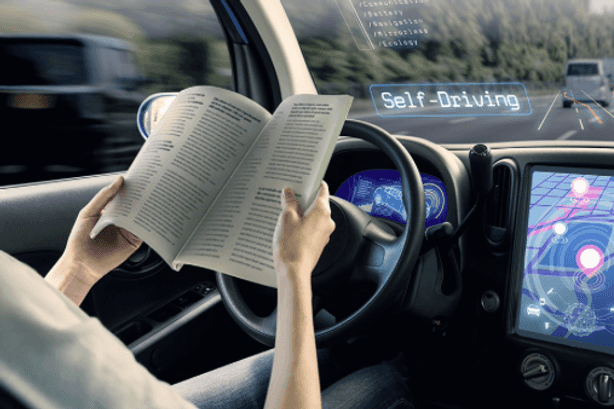Autonomous Driving Legal and Regulatory Issues Will Rear Their Ugly Heads as Level 3 Driving Looms Closer
As autonomous driving leaps from Level 2 to Level 3 this year with the introduction of Mercedes Benz model equipped with their Drive Pilot system, which is a Level 3 system, regulators are scrambling to enact laws that govern who would be at fault in the event of an accident when the owner of the vehicle is not driving.
Even though a Level 3 system is considered capable of driving itself, the driver must take control of the vehicle when the system prompts he or she to do so. Autonomous vehicles are an engineers dream and an attorneys next vacation. Could the driver be held responsible when the Level 3 system has control of the vehicle? Could the driver face prosecution if the computer makes a mistake?
These are questions that currently live in a gray area until lawmakers create definitive laws that dictate where the fault and responsibility lie. Mercedes is not committal to any fault on their part when Drive Pilot is in use. Does this mean that the driver of this type of vehicle is at risk every time they use the automated system? A case in point, the driver of a Tesla was involved in a fatal crash in California while using the automakers Autopilot driver assistance system. He stands accused of vehicular manslaughter. He also faces civil suit as well., however, this is a Level 2 system which requires the driver to be responsible for the operation of the vehicle.
With Level 3 automation, the vehicle assumes both active control and responsibility for driving when the system is engaged. The human operator is not considered the driver, as defined by the SAE “Levels Of Driving Automation”. BUT, the SAE are not lawmakers!
As long as autonomous driving is being shoved down our throats as a speed that seems greater than it should be, in this writers opinion, manufacturers should be liable for mistakes made by their automated system.
Drive pilot is scheduled to be launched for the 2024 model year in the Mercedes S Class and the EQS sedans. The system will operate at speeds up to 40 mph on certain roads in Nevada and California. It is stated that a Level 3 driving system can allow a motorist to remove his or her hands from the steering wheel and relax and relieve the stress and monotony of long drives. Great, what about the stress of “what if something goes wrong”.
As protection of the owner of a vehicle with a Level 3 system, read the fine print! It explains what you can do and what you can’t. As lawmakers struggle for a solution to automated driving, bear in mind that these coming laws will probably vary from state to state which further complicates the situation.
Another issue is, and this is a biggie, when the vehicle warns the driver to take back control of the vehicle, how much time does the driver need to orient themselves with the current warning, especially if they were asleep. If there is an emergency vehicle stopped in the middle of the street or a traffic light quickly turns red, is the driver expected to ignore those situations when in Level 3 operation. During tests of this type of event, it took drivers an average of 6.1 seconds to return their attention to what is going on in front of them. A lot can happen in 6 seconds.
Vehicles equipped with a Level 3 system, when warned to take back control of the vehicle and choose to ignore this warning will soon realize that their vehicle is slowing down followed by the vehicle coming to a complete stop. The question is, did the vehicle pull over and stop in a safe place or did it just stop in the middle of the road, which on a highway would certainly be a most undesirable situation. So, as you can see, a lot needs to be worked out before these autonomous vehicles continue to be shoved down our throats.
The following is a description of the various levels of automated driving:
Level 0 – A human is driving at all times. Features are limited to warnings and momentary active assistance, such as automated emergency braking.
Level 1 – A human is driving at all times. Features support steering, braking or throttle inputs. Adaptive cruise control is an example.
Level 2 – A human is responsible for driving, even if the system is sustaining active control of the vehicle. Features provide steering and throttle control, such as lane-centering and adaptive cruise control, at the same time. General Motors’ Super Cruise system and Tesla’s Autopilot are in this category.
Level 3 – An automated system drives when engaged in a specific area, such as a highway. The human is not considered the driver but must take over when the system requests they do so. Mercedes-Benz’s Drive Pilot is an example. It is expected to be engaged on U.S. roads this year.
Level 4 – An automated system drives, and a human has no role in the driving process. These systems may operate in specific conditions and limited areas. No vehicles with these types of systems are for sale to consumers. Waymo and Cruise have deployed and commercialized robotaxi service, which is considered Level 4.
Level 5 – An automated system drives, and a human has no role in the driving process. These systems may operate everywhere in all conditions. No vehicles with these types of systems are for sale to consumers.


